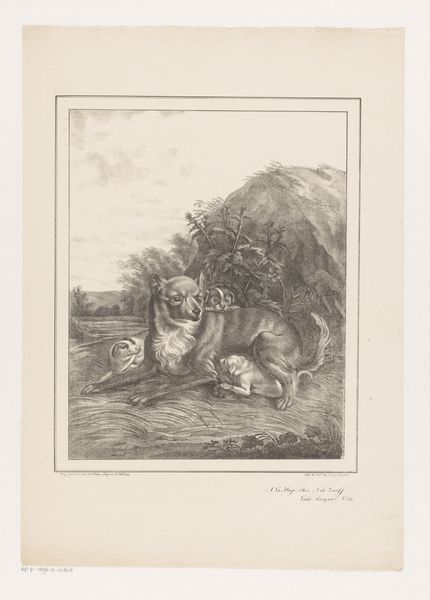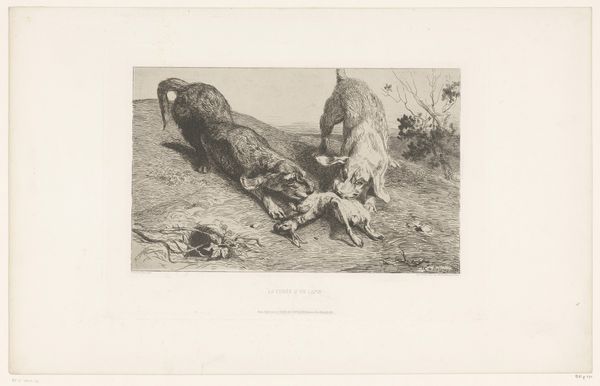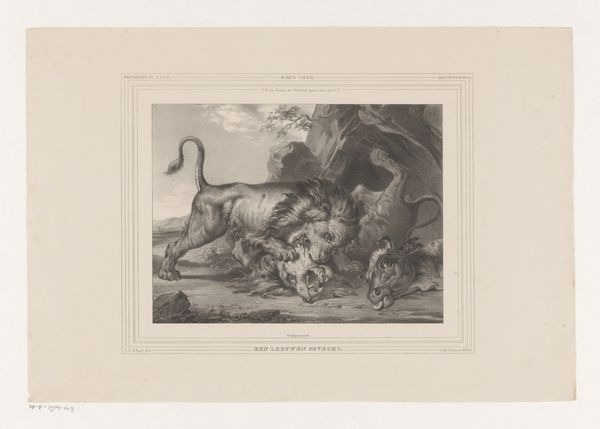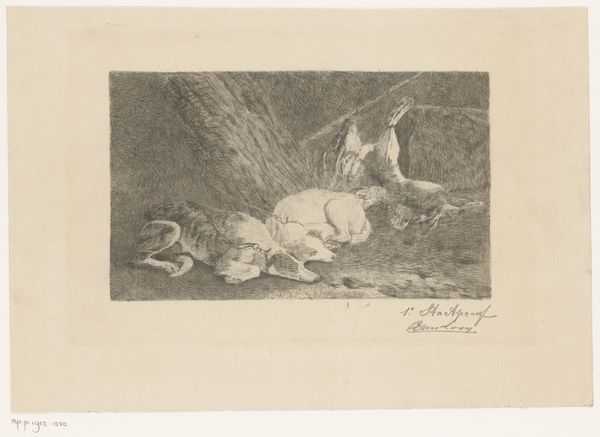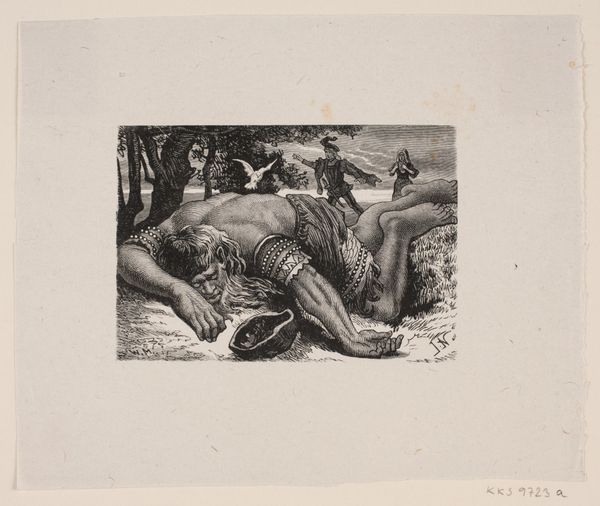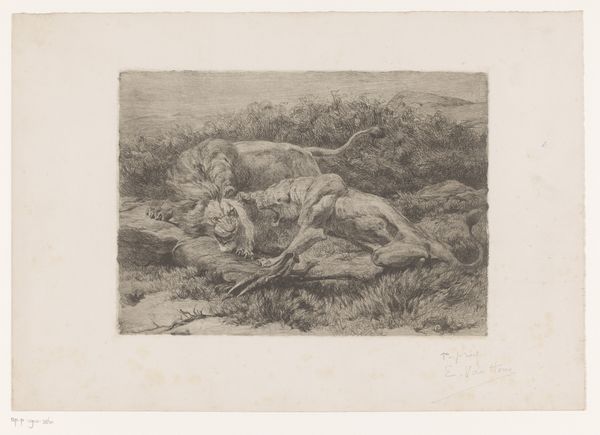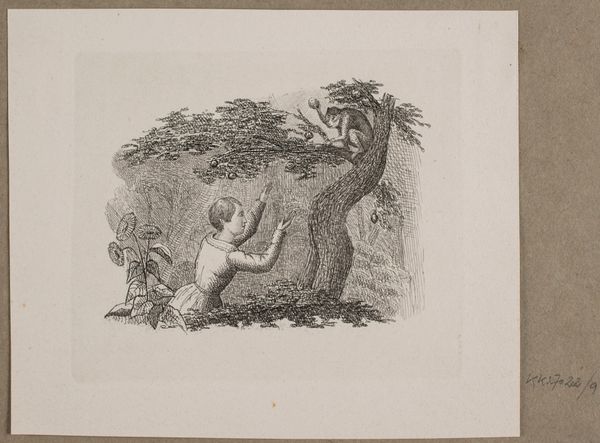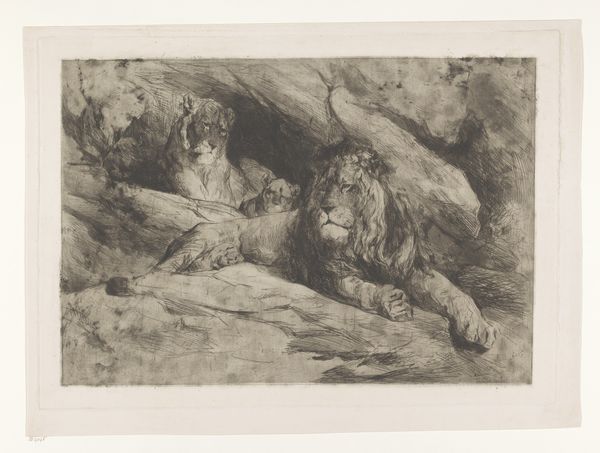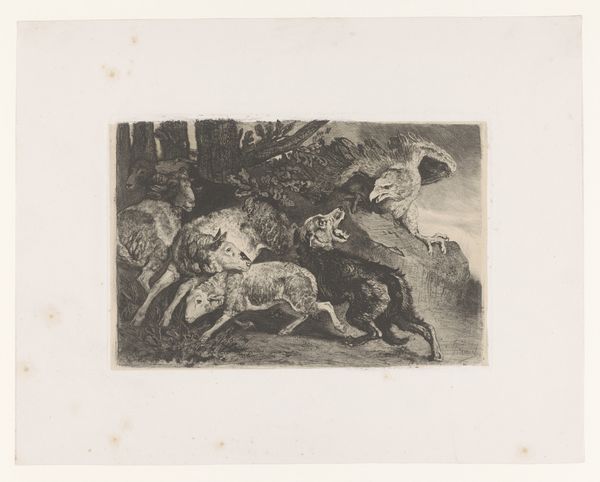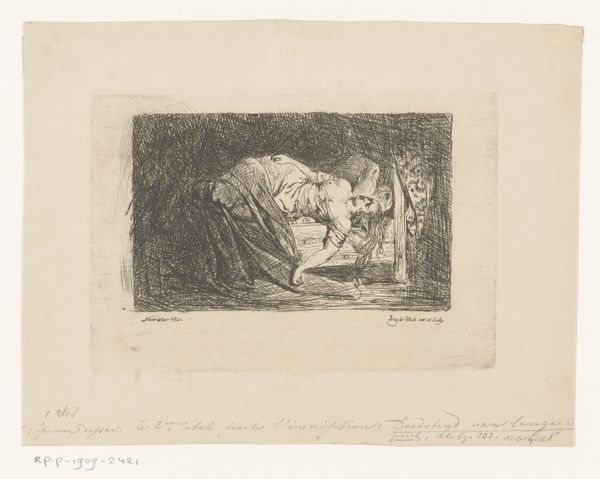
print, engraving
#
animal
# print
#
old engraving style
#
landscape
#
folk-art
#
romanticism
#
19th century
#
engraving
Dimensions: height 182 mm, width 211 mm
Copyright: Rijks Museum: Open Domain
Curator: Here we have Eugène Verboeckhoven's 1831 engraving, "Fight between Tiger and Boa," currently held at the Rijksmuseum. Editor: It’s immediately striking! The ferocity is almost palpable, particularly the tiger's desperation. Curator: Indeed! And Verboeckhoven was very celebrated for his depictions of animals. This piece is an engraving, so it inherently engages with a printing process meant for wider distribution, think mass consumption. The material implications are quite compelling; this dramatic scene would have been relatively accessible to a burgeoning 19th-century audience. Editor: What I find interesting is how Verboeckhoven sets up this primal combat. We have this very tense balance between, symbolically speaking, raw power embodied by the tiger, and cunning strategy presented through the snake. That intertwined embrace suggests an unavoidable entanglement, life and death as a continuous cycle. Curator: Precisely. Consider too the socio-political context of the time, the revolutions across Europe. Verboeckhoven's decision to reproduce this scene as a print connects it to the broader political landscape of information and control. The ability to disseminate imagery quickly and broadly shifted the playing field in many regards, in society and, on a smaller scale, within the frame of this imagined fight. Editor: The dark romanticism is striking. But this conflict feels less about geographical accuracy and more about representing some intrinsic battle – maybe one raging within ourselves? That intertwined struggle carries a visual metaphor about conflicting parts. Curator: Interesting, seeing the struggle between animal life in terms of something more abstract! And through his specific choice of reproductive technique, we witness a commentary about value and accessibility. Not only about class but knowledge itself, now so accessible via printed images. Editor: And beyond the social element there's also that raw symbolism that grabs the imagination. It leaves an imprint that continues far beyond the immediacy of the first viewing. Curator: Verboeckhoven captured more than just the surface; the artist used technique to participate in shaping an important part of his era. Editor: It makes me consider the idea of conflict itself, the dance between power and adaptation, an almost timeless contemplation.
Comments
No comments
Be the first to comment and join the conversation on the ultimate creative platform.

